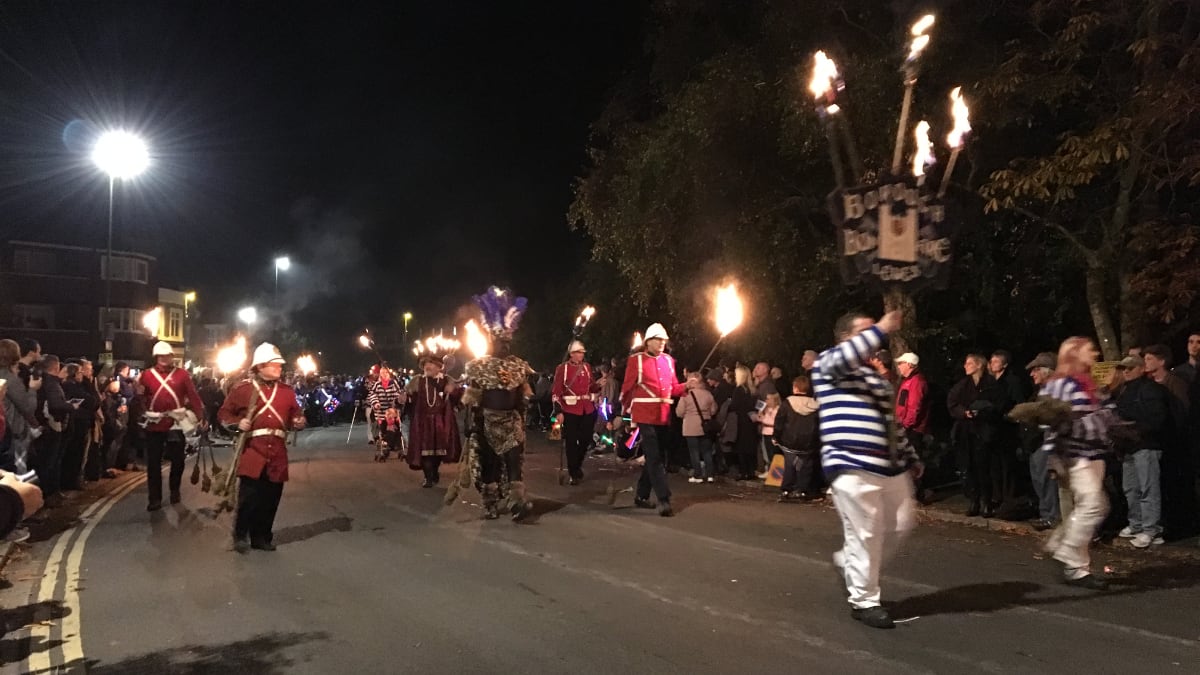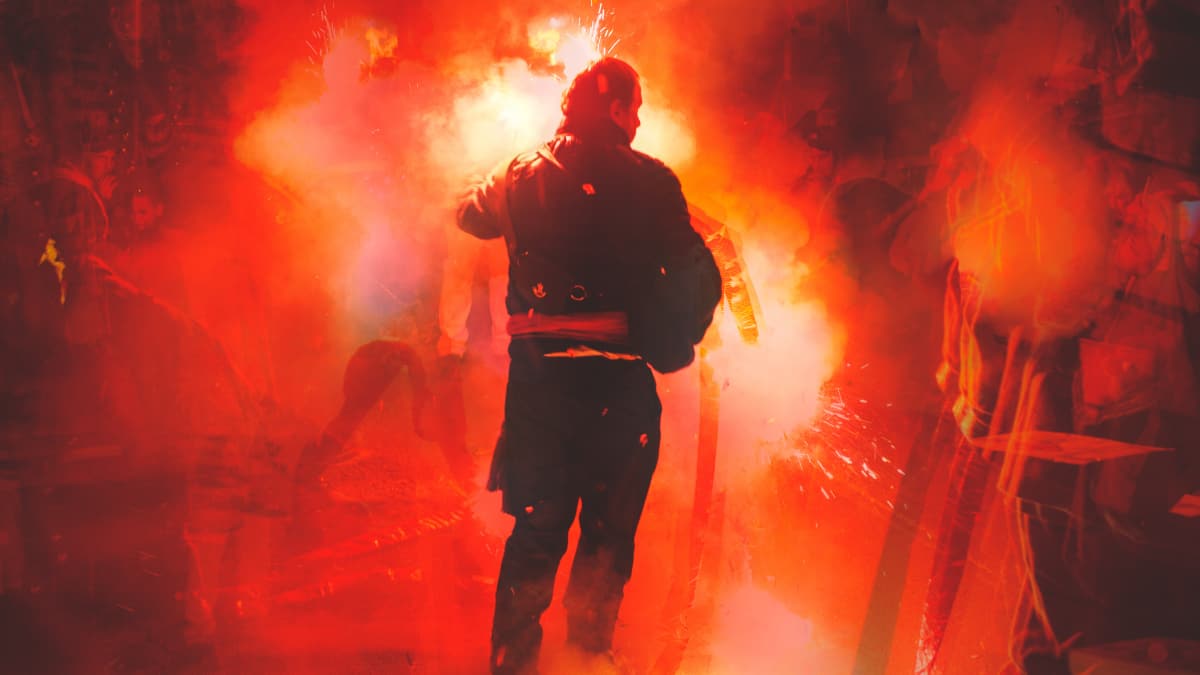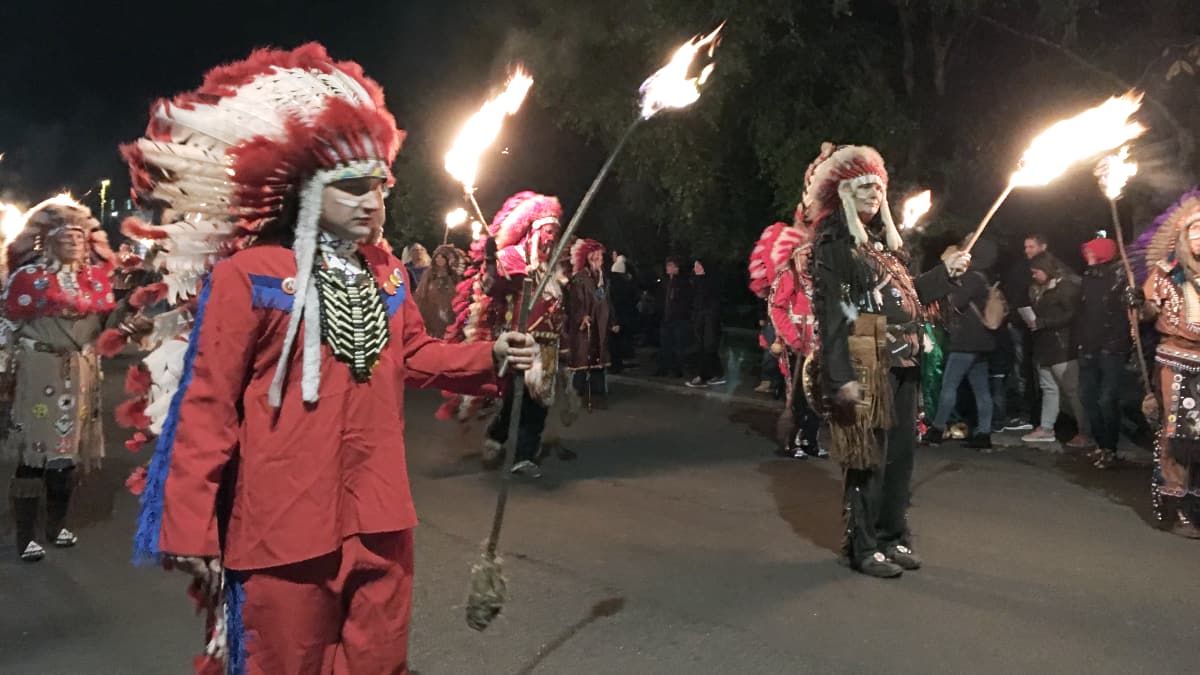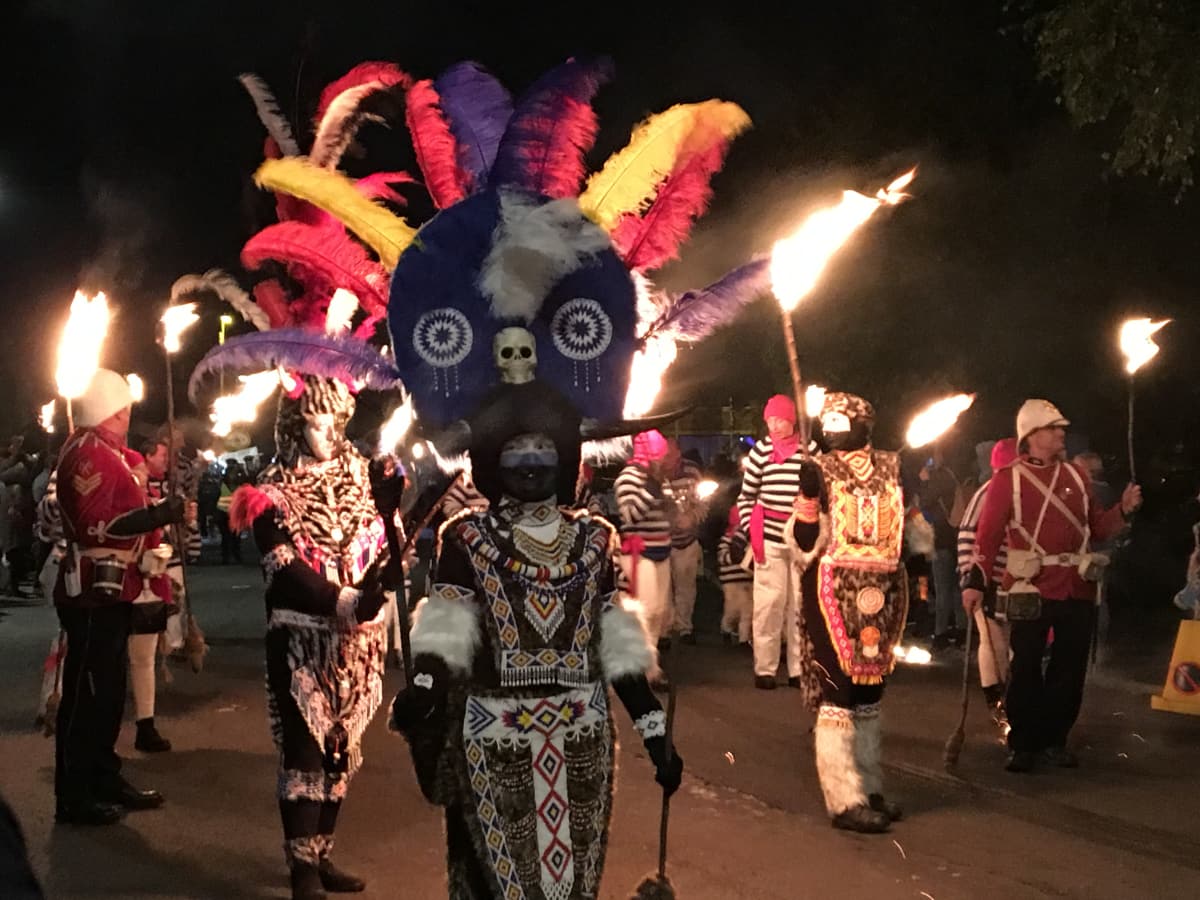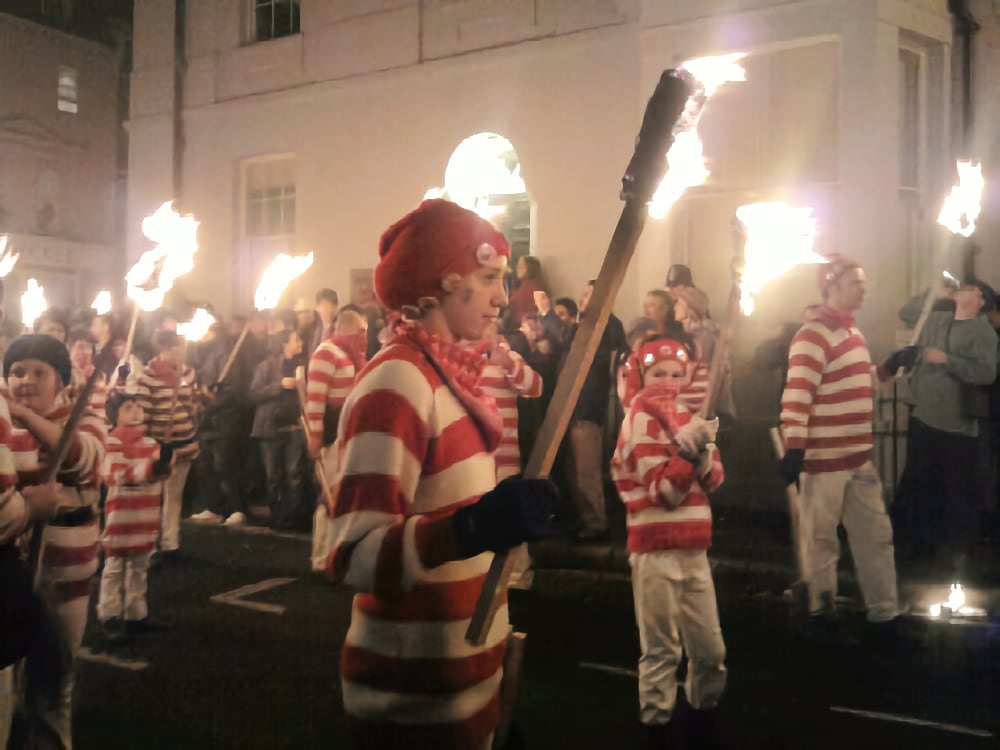With the days getting shorter and the nights drawing in, it’s a sure sign that summer is over for another year. As we approach the tail end of the year it’ll soon be time for bonfire night to be upon us. Whilst bonfire night is celebrated all over the country – nowhere celebrates bonfires more than Sussex. Or quite like Sussex!
Chances are that you’ve heard about the celebrations that take place in Lewes, East Sussex every year on 5th November. They’re famous, perhaps even infamous the world over. Shops and businesses close early and board up windows and doors. Trains often stop running into the town for the day. Health and safety regulations are tossed to one side (at least that’s how it feels in the midst of it all). Non locals are advised to stay away. Cars are abandoned on the side of the A27 as people hike in to witness what unfolds.
The keystone of Sussex based bonfire celebrations aren’t necessarily the bonfire itself or the fireworks that the night will culminate in. Instead it is the parade that takes place through the town where the celebration is taking place. Bonfire societies from across Sussex and neighbouring counties (where this tradition has overspilled into) come together in traditional dress of their society and parade through the streets – often carrying burning staves, sometimes with banners of protest (more on that in a second) and raising amazing amounts of money in the process for local charities.
The Sussex bonfire tradition goes under the motto We Burn For Good. It’s a unique protest that is not only cemented in the traditions around Guy Fawkes but also the burning of 17 protestant martyrs in Lewes High Street from 1555 – 1557 under the reign of Mary Tudor. Adopting the celebration of Guy Fawkes gave revellers an excuse back in the early days as that was the one night that civil disobedience was tolerated by the authorities. From the mid 18th century these celebrations, on 5th November, began to take on an entirely different meaning as a rallying point to protest against authority, inequalities and for social justice.
Fast forward to the Napoleonic wars and as the conscripted returned home they felt real hardship which compounded the social injustice that had been felt before. They formed into gangs around sea ports where, due to the connections they had, they could operate with a degree of impunity. They increasingly got politicised and used their “bonfire boys” to recruit supporters, collect subscriptions and make bonfires with burning effigies to show their dissent. There was a ban on assembly with burning torches and bonfires to quell this uprising. That didn’t stop the people of Lewes – under the Observance of 5th November Act 1605, they continued with their bonfire celebrations. This included the rolling of burning barrels of tar through the narrow streets that quite literally risked the lives and businesses of the ruling classes.
Further influences on the Lewes celebrations date back to 1850 when the Roman Catholic Relief Act 1829 came into effect with the Pope restoring Catholic bishops in England. This caused enormous public backlash. Not ones to shy away from showing their disdain – the bonfire boys of Lewes burned an effigy of the Pope as well as Guy Fawkes. New bonfire societies emerged across the county and across numerous nights fires burned with signs of No Popery Here. With the history of earlier riots in the town, the police and the authorities took the decision that “forbearance on the part of the authorities is the better policy” and so grudgingly accepted these celebrations would continue with the Police just watching on. Whether you were a Protestant under a Catholic throne or wanting to protest against the social injustices and inequalities of the time – so Lewes on 5th November was the place to be. Each year on 5th November these celebrations and protests continue. Whilst not for the faint hearted – if you ever get the opportunity to experience these celebrations in Lewes – it’s something that will stay with you long after!
Whilst the focus in history has been on Lewes, home of 7 separate bonfire societies – many other towns across Sussex also have bonfire societies and parades that have now become an annual tradition as not seen elsewhere in the United Kingdom. The societies dress in costumes that hark back to either times gone by or in honour of those bonfire boys who kick started this as they returned from the Napoleonic wars. Parades start in September and run through into November to allow one town’s bonfire society to parade alongside other societies in other towns – coming together as one to honour history of the occasion. It usually starts with Uckfield on the first Saturday in September and goes through until the third Saturday in November, culminating with the Hawkhurst and Barcombe festivals (with Lewes always being on 5th November – no matter what day of the week it falls!).

